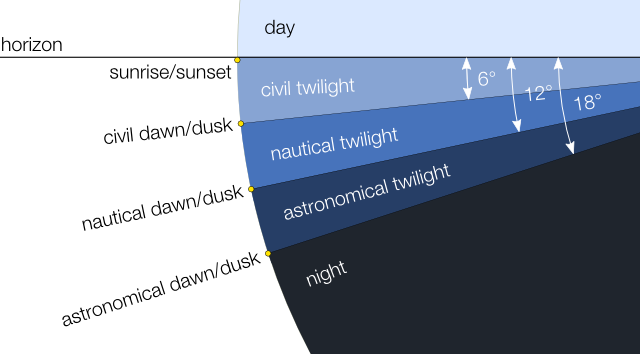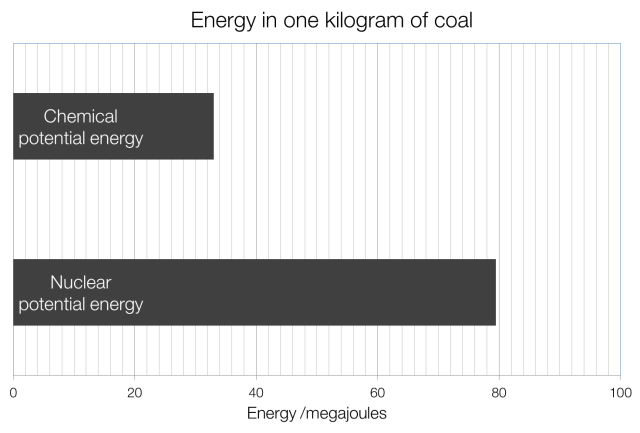Dawn occurs before sunrise, before the top of the Sun reaches the horizon. Astronomical Dawn is the point at which it becomes possible to detect light in the sky, when the sun is 18° below the horizon. Nautical Dawn occurs at 12° below the horizon, when it becomes possible to see the horizon properly and distinguish some objects. Civil Dawn occurs when the sun is 6° below the horizon and there is enough light for activities to take place without artificial lighting.
Dusk occurs after sunset, once the top of the Sun has passed the horizon. As with dawn there is astronomical dusk, nautical dusk and civil dusk, occurring at 18°, 12° and 6° below the horizon respectively.
Twilight is the name given to the period between dawn and sunrise, or between sunset and dusk, when light is still visible in the sky due to sunlight scattering off the atmosphere. It can also be separated in astronomical, nautical and civil sections by how far below the horizon the Sun is.

Sunrise and sunset are the points at which the top edge of the Sun reaches the horizon; the only difference between them is the direction in which the Sun is moving at the time. It actually occurs when the top of the Sun is 0.57° below the horizon due to refraction of the Sun’s light by the atmosphere.
